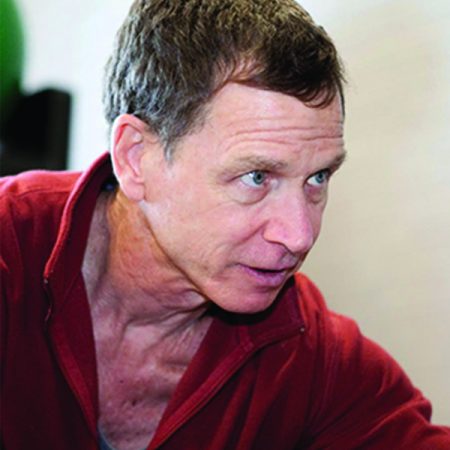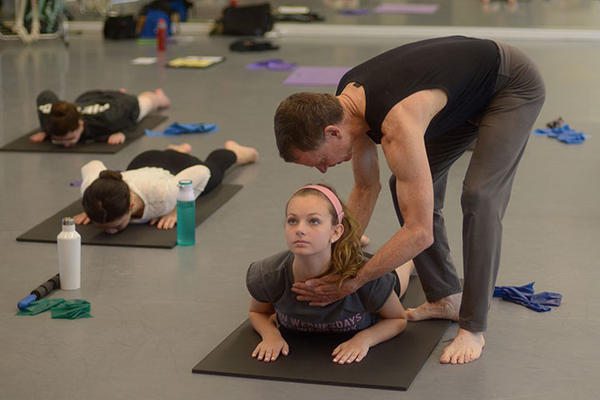
Dance is a unique artistic activity. Dancers need to be more than artists; they need to be athletes, too. And yet, all too often, dancers’ careers are cut short by injuries that could have been rehabilitated or avoided entirely with a holistic approach to dance training.
Florida State University’s School of Dance takes a cutting-edge approach to dancer wellness under the direction of Professor of Dance Tom Welsh, who had the foresight to develop the Dance Science program at FSU.
When Welsh came to FSU in 1991, applying the sciences to the challenges of training dancers was a fairly new endeavor, and his work has been innovative in the rapidly developing field. He created an injury risk management program and curricular infrastructure that is exemplary among university dance training programs across the country.
“We help dancers learn how to address problems before they become debilitating, and we help them build new capacities before they exceed their current limits,” Welsh said. “Perhaps our most important guiding principle is: Do a little more today than you did perfectly yesterday.”
With FSU dance majors being physically active an average of 6 to 8 hours daily, Welsh identified the need to provide injury management consultations for dancers to address the stresses of the intensive physical training that comprise the core of the school’s dance curriculum.
Twelve years ago, Welsh enlisted physical therapist Tyressa Judge, who is on staff at the FSU Wellness Center, to consult with dancers about injury management each fall. Judge performs injury-risk screening activities for first-year dancers to help FSU’s dance conditioning staff identify and assist dancers who have movement habits and muscular imbalances that put them at risk for injury.
Judge also conducts weekly consultations with dancers who are experiencing problems that she can help them resolve before they become injuries. Her work with dancers emphasizes prevention — early detection and correction of muscular imbalances, misalignments and faulty movement patterns are the top priorities.
“I started working more closely with the dancers because of course I appreciate movement, but I was also surprised at some of the weaknesses they have,” Judge said. “I was also concerned that when they were injured, their academic life suffers. I felt I could help foster the concept of wellness and preservation. Any performance person is not an expendable commodity.”
While working with students in the dance-conditioning studio, Welsh also developed supplemental training practices tailored to meet the needs of FSU dancers. The School of Dance’s dance-conditioning studio contains 16 major training apparatuses and an elaborate collection of smaller training devices used by FSU dancers to supplement their daily technique training.
In addition to individual dancers using the studio to prepare, a variety of dance conditioning and dancer wellness classes held in the conditioning studio are now integral components of the School of Dance curriculum. Courses are designed to help students become agents of their own bodies and their professional dance training.
The curriculum’s goal is to help dancers make the transition from student dancer — where teachers assume major responsibility for bodily maintenance — to professional dancer — where the primary onus is on the dancer to maintain his or her own body. In several cases, the conditioning studio classes have facilitated dancers’ rehabilitation from injuries that have ended other dancers’ careers.
The final component in FSU’s uniquely integrated dance sciences program is research. When Welsh arrived at FSU, most research in the dance sciences was at the descriptive level, or it involved simple translations of research in the sport sciences. Over the past 25 years, it has evolved to include intervention research specifically focused on the challenges faced by dancers and those who train and treat them.
As research has become explicitly focused on the challenges that dancers face, dancers and teachers have become more interested in what can be learned. The growth of the field has resulted in the creation of the International Association of Dance Medicine & Science and its flagship Journal of Dance Medicine & Science.

Tom Welsh works with a student at the dance conditioning studio. (Photo by Meagan Helman)
Led by Welsh, FSU continues to play an important role in the development of the dance sciences. Throughout the years, Welsh has collaborated with several students to conduct empirical research with dancers.
Loren Davidson (MFA ’12), a former student dancer who has served as a visiting faculty member at the FSU School of Dance for the past three years, developed an injured dancer’s curriculum and presented dance science research at conferences under Welsh’s mentorship.
“Tom Welsh saw potential in me while I was going through a difficult injury that changed my career path entirely,” Davidson said. “In the midst of an injury in which it seemed like my dance career might be over, he encouraged me to continue pursuing my passion for dancing while also combining my love of dancer wellness and curiosity for holistic approaches to dancer injury rehabilitation.”
Dancers, faculty and staff are in agreement that Welsh’s influence on FSU’s distinguished dancer training program has been beneficial and important.
“His combination of skill, knowledge, wisdom and genuine concern for the dance students at FSU is what makes him such a truly exceptional professor,” said Elizabeth Saluke (MFA ’11).
Welsh’s classes are some of the most challenging in the curriculum and some of the most life changing. He is highly regarded for his contributions to the dance sciences on an international and national scale, to the FSU School of Dance and to the individual dancers with whom he works.
“I had to work really hard in his classes, but without Tom I would never have been able to become the dancer I’ve always wanted to be,” said Alyssa Velazquez, a senior BFA student. “When you work with Tom Welsh, you know you are working with the best. You know you are working with someone who is dedicated to helping you achieve your greatest potential.”
Visit dance.fsu.edu for more information.




